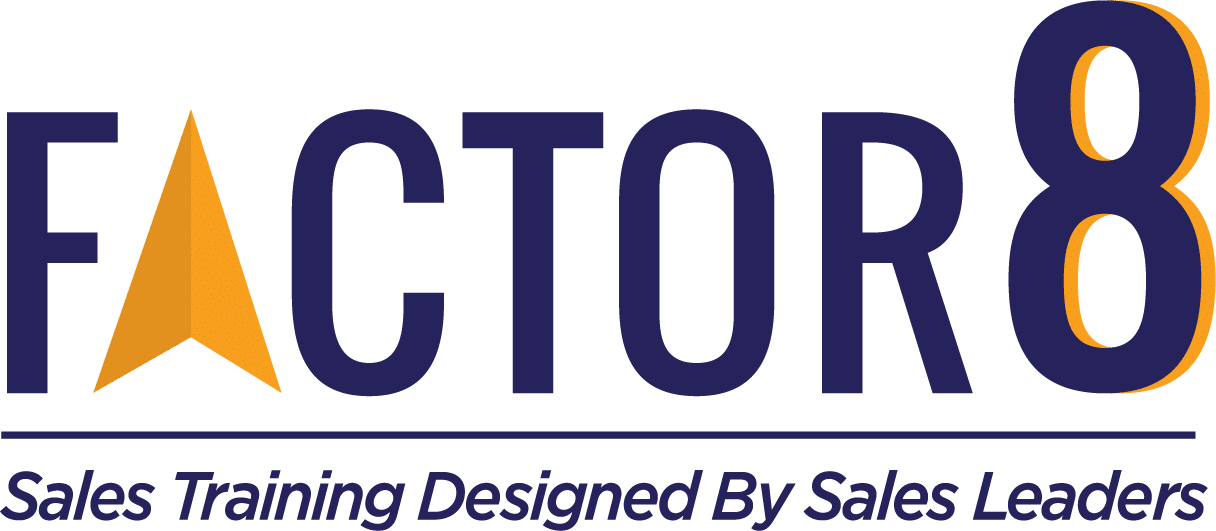10 Signs Your Sales Team Needs Sales Training
Your budget is limited. Your needs are not. So when do you know it’s time to invest in sales training for your team?
READ: New Funded Sales Training Program
Here are some easy benchmarks and warning signs to help determine if your sales team needs sales training:
1. Your New Hire Training Doesn’t Include Sales Training. I know, you hired for sales talent. You shouldn’t need to train them. If I had a nickel every time I heard that… Trust me, they need training. Why? Their old company did it differently, the sales motion was slightly different, they love a different methodology, and maybe they were loyal sellers but not great ones. I’ve had 15-year sales veterans in my virtual sales skills classes and often their learning curve is the steepest. (Head here for more info on what good virtual sales training looks like)

2. The Last 4 Classes Were Product Related. If you’re thinking: “I do training all the time!”, I invite you to check the content. Reps are used to getting product/service updates and company updates, but not skill refreshes. Sales skills should be taught in onboarding AND at least once a quarter ongoing.
Think of sales calls as “game day.” How often did you practice before then?
3. There’s Been a Strategy Change. About half of our clients come to us because it’s been a struggle to change behaviors now that ______ has changed. Sometimes it’s a go-to-market strategy, client coverage, or an addition of a product or service line. You get it. What seemed simple in the boardroom can prove crazy-making when trying to align 50 junior reps and their managers. Just remember, telling them in the meeting only opens the door. Most employees don’t have the capacity nor the inclination to then translate how this will change their approach, their conversations, their goals, etc. Tell, TRAIN, then coach.
4. You Just Listened to Sales Calls and Your Ears Are Bleeding. If you’ve recently implemented a conversational intelligence tool like Gong, Chorus, or ExecVision, you probably thought it would be fun to listen to the customer’s voice. By the ninth call recording, I’m willing to bet you summoned your team leads and training liaison and had a serious talk about rep skills. Enter professional sales skills training.
5. You’re Losing Gen Z or Millennials. If the last 3 exits or thanks-no-thanks job rejections were Gen Z or Millennials, check your training package. A recent article cited “opportunities for development and advancement” as the number one requirement for these job seekers. New hire product and systems training won’t cut it if you want to attract and keep today’s talent.
Are you considering alternate hiring pools and need to teach former teachers, retail workers, vets or tradespeople how to sell?
Assign this task to the professionals, your HR trainer is probably not equipped for that heavy overhaul. Alternatively, congratulations on your brilliant strategy. Great training programs will open multiple hiring pools to you that won’t be open to your competition, and I love finding behavioral traits in an existing hire rather than teaching the skills to someone new!
6. It’s Playbook Time! If you’ve grown to the point where it’s time to capture best practices and “how a bill becomes a law” at your shop, I’m guessing you have more than 10 reps but under 50 and you’ve been selling between 1 and 3 years. It’s time to document! Before you do, grab some new best practices from a professional sales trainer. The perfect time is after draft one and before it’s finalized. Invariably, clients who just finished their playbook have gone back to update it with our skills and strategies. If you’re not sure which to do first, I do recommend starting the playbook so that what’s already created can be standardized and uniformly improved with training.
7. Flat Growth. If you’ve used the same conversion ratios the last 2-3 times you’ve done headcount projections, it’s time for some training. In other words, rep staffing isn’t always a quantity equation, you should bank on quality improvements as well. Not sure? Ask yourself how many heads you could save in your budget with a 15% improvement in your top-line conversion metric (whatever that may be). We regularly clock 30-70% improvements allowing sales leaders to lower sales headcount! Shift that spending to your “want” list instead!
Now let’s check in on manager training. Most companies invest in new hire training, then ongoing rep training, and maybe finally manager development. Makes sense, there’s only one for every ten or twenty reps, right? Unfortunately, most reps we promote to manager fail in the first 24 months (50-70% according to the Corporate Executive Board), and they can take down great customers AND reps with them. Here are three signs to check:
8. Your Turnover Is Over 65% or Increasing. If you don’t have annualized employee turnover/exit rates on your dashboard, get them – and by manager. Your star sales managers are keeping their teams and promoting reps rather than suffering high attrition. This is a red flag that you have a struggling manager – perhaps one who hasn’t been taught how to lead people yet.
9. Low Employee Engagement Scores. Consider this a leading indicator KPI of attrition. It is NOT a buyer’s market anymore and if you have a great rep they are actively being recruited out. New generations demand ongoing development opportunities, so be sure you have a line item in your budget every single year. If not, you simply won’t be able to compete for talent.
10. You’ll Be Scaling in the Next 18 Months. If you’ve proven your concept (product fit and funding or even the voracity of digital sales vs. field selling), you’ll be planning to add headcount. When doubling (or more) in size, the critical path is your management team. Sales management training helps provide a consistent rep experience (teams will juggle), a consistent sales process, a consistent definition of what is a good call, consistent performance evaluation, and consistent hiring. I think you’re getting the keyword here. Consistency will allow for a smooth scale. Without it, you’re trying to replicate the Wild Wild West and you’ll experience a spike in rep (and manager) attrition 3-9 months after your hiring waves.
Bonus: Before you scale is also the right time to upgrade your onboarding experience. You’ll need a standard curriculum, testing, wave-based hiring, sandbox systems, and a professional sales curriculum. Do this before tripling the team’s volume in class!
If you’ve found a few signs that your team needs sales training, I hope you’ll reach out and have a conversation. We’re happy to help you decide what skills would help most even if you don’t ultimately outsource to us.
Ready to invest in sales training?
Contact us today to request information on our customizable virtual sales training programs
available for reps (and managers).

